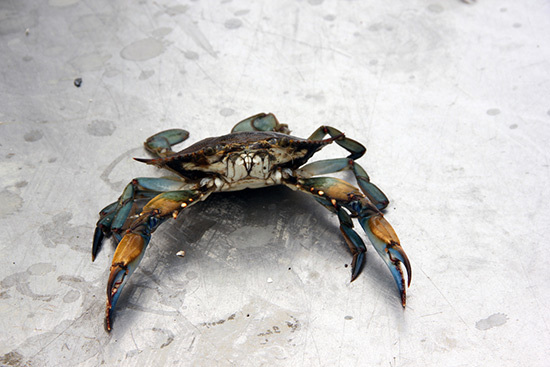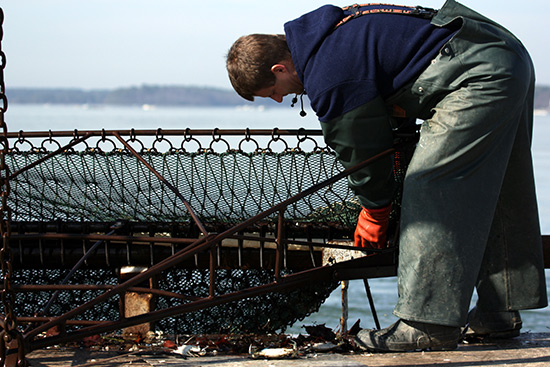Winter dredge survey counts Chesapeake Bay crabs
The annual estimate of blue crab abundance is critical to managing the species.
When cold weather arrives, blue crabs up and down the Chesapeake Bay stop their scurrying. The summertime rush of food-hunting and mate-finding is over, and the crustaceans will spend the winter months buried in sand and sediment. It is at this moment that researchers in Maryland and Virginia must strike: to count the crabs while they are still.
Known as the winter dredge survey, this annual count of the Bay’s blue crab population is a critical part of blue crab management. Without an accurate estimate of blue crab abundance, fisheries managers cannot set harvest limits for the season ahead.

“The winter dredge survey is the most vital tool that we have in crab management,” said Chris Walstrum, a natural resources biologist with the Maryland Department of Natural Resources (DNR). “This is the best chance we have to assess the [blue crab] population, because the crabs are stationary.”
Walstrum and his team are responsible for counting crabs in Maryland waters; the Virginia Institute of Marine Science (VIMS) conducts the winter dredge survey in the Virginia portion of the Bay. Between the two agencies, a total of 1,500 Bay sites are visited over the course of three and a half months before the numbers are crunched and fisheries managers can make recommendations on how blue crab harvests should or shouldn’t change.
On a warmer-than-normal January morning, Walstrum is aboard a boat in Broad Creek, a tributary of the Choptank River on Maryland’s Eastern Shore. The DNR vessel has been captained for more than a decade by Roger Morris, a fifth-generation waterman who used to dredge for crabs commercially and whose skills are invaluable to the success of the survey.
“Whether people like it or not, the winter dredge survey is the whole basis for our [blue crab harvest] limits,” Morris said. “That’s why I try to do the best I can do at it. It takes experience. You just can’t walk on a crab dredge boat and expect to catch crabs.”

At each survey site—six of them in this particular waterway—Morris will line up his boat and drop its so-called Virginia crab dredge into the water. The metal dredge is towed along the bottom for one minute before it is hoisted back on board, where the newly caught contents of its mesh liner are dumped out and sorted through. In each catch, there are brown leaves, oyster shells, little fish and, more often than not, a collection of blue crabs.
Each crab is weighed, measured and sexed before it is tossed back into the water. This provides an accurate picture of the blue crab population, as researchers track the number of young crabs that will form the backbone of the fishery next fall and the number of females that will produce the next generation of blue crab stock.
“The winter dredge survey provides us with a cornerstone piece of data from which to operate our [blue crab] management,” said Brenda Davis, chief of the DNR Blue Crab Program.
“It’s a long-running survey, and it’s been consistently accurate,” Davis said. “It gives us a good, static picture of the number of crabs in the Bay.”
Video produced by Steve Droter.

Comments
There are no comments.
Thank you!
Your comment has been received. Before it can be published, the comment will be reviewed by our team to ensure it adheres with our rules of engagement.
Back to recent stories